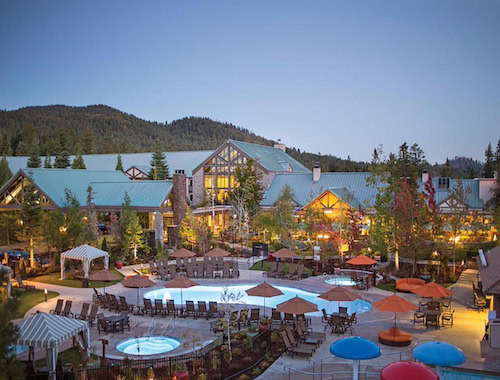Page Contents
Taking a road trip around California and want to know how to get from Mammoth Lakes to Yosemite National Park? Here’s everything you should know.
I visited both Mammoth Lakes and Yosemite on my trip from San Francisco, and saying I loved it would be a massive understatement!
There are several ways to get from Mammoth to the national park, and I’ll go through all the details in this guide, as well as the things to do and accommodation options. Make sure to read until the end before going!

Mammoth Lakes to Yosemite National Park
Let’s start this guide with the essentials you should know about Yosemite National Park and the drive from Mammoth Lakes.
Short on time?
Here are the quick things you need to know for your trip to Yosemite National Park
These are our reliable partners and services that I recommend and personally use on my trips.
➡️ Search for the best Tours on Viator & GetYourGuide
➡️ Look at luxury and affordable Hotels on Booking and Expedia
➡️ Options for Car rental
➡️ The best travel insurance for California
➡️ Check the flight prices from the UK or the USA
➡️ Make sure you have your e-SIM!
Each offers unique value and special deals tailored just for you. Don’t miss out on these when travelling to California!
Where is Yosemite National Park?
Yosemite National Park is located in the central part of California, and it spans across the western slopes of the Sierra Nevada mountain range.
The park is famous for its stunning landscapes that include cliffs, waterfalls, sequoia groves, and a diverse range of wildlife habitats, and that is a great day trip from Mammoth Lakes.

Distance Between Mammoth Lakes and Yosemite
The distance between Mammoth Lakes and Yosemite National Park varies depending on the route and entry point into the park (there are 5 entry points).
The direct route through Tioga Pass, the park’s eastern gate, which is usually open from late spring to early fall, covers about 40 miles and you can get to Yosemite in about 40 minutes.
However, when Tioga Pass is closed during the winter, the distance increases significantly as you need to take alternative routes, often travelling south around the Sierra Nevada range, make the trip over 150 miles long.
The Yosemite entrances open during the winter are:
- Big Oak Flat – Highway 120 from the West
- El Portal – Highway 140
- Wawona – Highway 41
I personally recommend driving from San Francisco to Mammoth Lakes to Yosemite in the summer months as the drive is short, but you’ll want to stay closer to the western gates in the wintertime.

Bus from Mammoth to Yosemite National Park
In the summer months, the Yosemite transportation system (YARTS) provides bus service from Mammoth to Yosemite, making stops at Mammoth, June Lake, Lee Vining, Tuolumne Meadows, and in the valley itself.
Generally speaking, the bus route operates from July to October, but that may vary based on the accessibility of Tioga Pass.
The bus route is very popular and tickets sell out quickly, and I recommend booking yours ahead of time to secure your spot on the bus.
Driving from Mammoth Lakes to Yosemite National Park
When driving from Mammoth Lakes to Yosemite National Park, you’ll get stunning views and natural beauty along the way.
As mentioned previously, the most direct route during the summer months is via Tioga Pass on Highway 120, which is typically open from late May or early June through October, depending on snow conditions.
This drive can take about 40 minutes to one hour, covering roughly 40 miles to the eastern entrance of Yosemite.
Along the way, you can enjoy breathtaking views of mountain peaks, wildflower meadows, and clear alpine lakes. This is one of the best landscapes you’ll have on any Northern California road trip, so don’t forget your camera.
I recommend passing by the Tioga Lake just outside the park entrance, perfect for a quick photo or a short stroll, and Tuolumne Meadows, a great spot for a picnic or a leisurely walk along the river.
Once you reach Yosemite, parking can be found at various points depending on where you want to explore. The entrance is at this location.
Note that parking lots can fill up quickly during peak tourist seasons, and I recommend arriving early. Parking is also available at Tuolumne Meadows and near major trailheads.
With some planning, the drive from Mammoth Lakes to Yosemite will be one of the most memorable experiences you’ll have in California!

Things to Do in Yosemite National Park
I’m confident you have a better idea about getting from Mammoth Lakes to Yosemite National Park, but let’s now talk about the things to do here.
Take a Scenic Drive on Tioga Road
The easiest way to get here from Mammoth Lakes is to drive on Tioga Road, and you’ll love the views.
This route is open seasonally from late spring through fall, and it stretches across the park’s high country. The drive offers incredible views over the Sierra Nevada, alpine meadows, and clear mountain lakes.
Key stops include Olmsted Point, with its panoramic views of the surrounding granite formations, and Tenaya Lake, where you can relax by the water or enjoy a picnic.
Tioga Road also provides access to several trailheads leading to backcountry areas, perfect for those looking to hike or backpack.
Remember to check road conditions and closures before you go, as snow can impact accessibility outside of the summer months.

Visit Yosemite Valley
Yosemite Valley is the crown jewel of Yosemite National Park, and it’s known for its iconic landmarks and natural beauty.
The valley floor is home to famous rock formations such as El Capitan and Half Dome, which are both incredibly beautiful.
And if you like waterfalls, you simply can’t miss out on Yosemite Falls, one of the tallest waterfalls in North America, cascading at rises 2,425 feet (739 meters), and I’m sure you’ll take awesome photos here!
Last but not least, for a unique perspective, visit Tunnel View lookout, where you can capture the classic photograph of the valley framed by its granite cliffs and towering waterfalls.
In short, Yosemite Valley is one of the most scenic spots around California, and I highly recommend stopping here when coming from Mammoth Lakes.

Explore Mariposa Grove
Mariposa Grove, located in the southern part of the national park, is home to over 500 giant sequoias, the largest trees on Earth by volume.
The grove features a number of well-marked trails, such as the Grizzly Giant Loop Trail and the Mariposa Grove Trail, which lead visitors to famous trees like the Grizzly Giant and the California Tunnel Tree.
It’s worth noting that the sequoias are over 2,000 years old, and it’s just one of these places to visit at least once in a lifetime.
In winter, the grove transforms into a quiet, snowy wonderland, offering a different kind of serene beauty.
Whether you visit in the snowy winter or in the summer, Mariposa Grove is definitely worth it no matter what, and you can expect to spend at least 3 hours here, including the hike to the Big Tree Loop.


Hike to Glacier Point
Glacier Point offers one of the most stunning views in Yosemite National Park, and getting there can be as adventurous as you wish.
If you’re up for a direct route, you can drive directly to Glacier Point and explore the area from the viewpoint which overlooks Yosemite Valley, Half Dome, and the High Sierra.
This spot is about a 30-mile drive from Yosemite Valley, taking roughly an hour.
Alternatively, for the more adventurous, hiking to Glacier Point via the Four Mile Trail is a great choice. This trail measures about 4.8 miles one-way and takes roughly 3 to 4 hours, depending on your pace, and you’ll eventually reach Half Dome.
Starting from the Valley floor near the base of Sentinel Rock, the trail climbs steeply to the top, where you’ll be rewarded with panoramic views.
Keep in mind that the trail can be quite strenuous, so it’s best suited for those in good physical condition.

Raft the Merced River
Rafting down the Merced River is a popular summer activity in Yosemite, especially from late spring through early summer when the water levels are high from the snowmelt.
The rafting route typically covers a stretch of the river that flows through Yosemite Valley, offering a leisurely way to enjoy the park’s scenery.
You can rent rafts right in Yosemite Valley, typically from Curry Village, where organised raft rentals are available. These trips cover a few miles and can take between 2 to 3 hours, depending on the water flow and how much time you spend drifting or stopping along the banks.
The float trip allows you to see the granite cliffs from the unique vantage point of the river, making for a fun, adventurous, and scenic day out.
Note that private rafts are not permitted, and the rental operators provide all the necessary equipment, including life jackets.

FAQ: Mammoth Lakes to Yosemite
Now that you know what to expect and the things to do in Yosemite National Park, let’s go through some questions that you may have as a first-timers at the park.
What is the Best Time to Visit Yosemite?
The best time to visit Yosemite National Park depends on what you want to do. Spring (April to June) is ideal for viewing waterfalls at their peak, thanks to the melting snow. Summer (July to August) offers warm weather and access to all areas of the park, including the high country trails.
Fall, on the other hand (September to November), is less crowded and the foliage is stunning, while winter (December to March) is perfect for snow sports and experiencing Yosemite’s quiet beauty.
What to Pack for a Road Trip to Yosemite National Park?
When packing for a road trip to Yosemite, you should include a mix of clothing for various weather conditions, as temperatures can change quickly.
Include warm layers, a waterproof jacket, and comfortable hiking shoes. Don’t forget a map of the park, a first aid kit, plenty of water, and snacks for the trail. Sun protection is essential, so pack sunscreen, sunglasses, and a hat.
Finally, if you plan to stay overnight, bring camping gear if you’re camping, or make sure to book your accommodation ahead of time as they can sell out quickly.

How Long to Stay in Yosemite National Park?
How long you should stay in Yosemite National Park depends on your interests and the time you have available. A minimum of three days allows you to see the major sights like Yosemite Valley, Glacier Point, and Mariposa Grove.
If you have a week, you can explore more deeply, including hiking in less trafficked areas like Tuolumne Meadows and Hetch Hetchy, or attempting more challenging hikes like the Half Dome.
Where to Stay in Yosemite?
There are several accommodation options to choose from in Yosemite, and these are the best properties to stay for all budgets.
Luxury: Tenaya at Yosemite

Mid-Range: Heidelberg Inn

Budget: Mother Lode Lodge

Where to Stay in Mammoth Lakes?
There are dozens of accommodation options to choose from in Mammoth Lakes, and these are the best properties to stay for all budgets.
Luxury: The Westin Monache Resort

Mid-Range: Empeiria High Sierra Hotel

Budget: Moderne Hostel

Conclusion
To conclude, travelling from Mammoth Lakes to Yosemite National Park is your chance to see some of the most stunning landscapes in the Sierra Nevada and California as a whole.
Whether you choose to drive or use the shuttle bus, each route presents its own unique set of views and experiences.
Thanks for reading until the end and I hope this complete guide was helpful to plan your trip from Mammoth!

